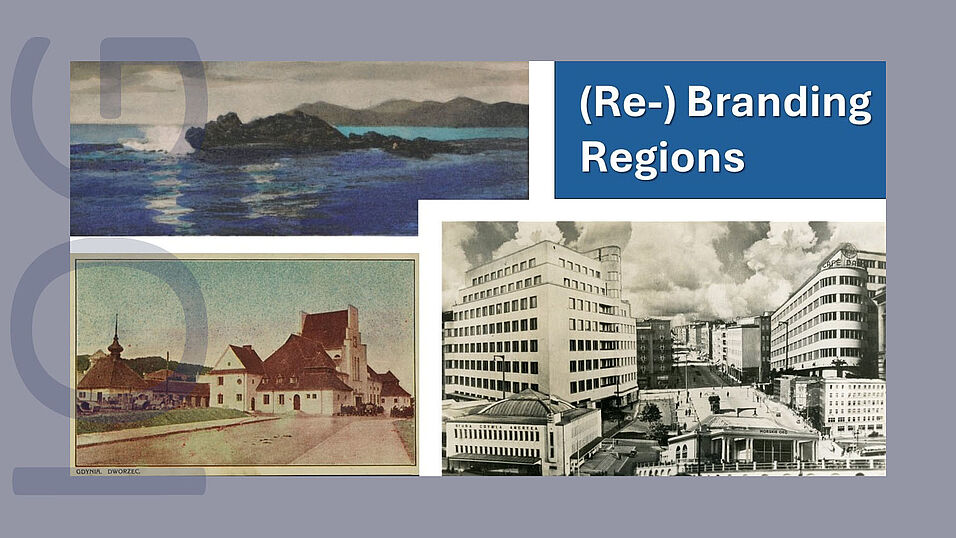Organizers:
Dr. Martin Rohde, University of Vienna
Dr hab. Jagoda Wierzejska, University of Warsaw
The concept of “region branding” originates from marketing studies and has recently entered cultural history. Approaches investigating the “branding” of places have been applied to cities, landscapes and regions in the framework of history of state- and nation-building, tourism, urban spheres and landscapes, which are building on visual and spatial turns. At the prospective conference, we aim to explore the concept in a broader and comparative framework focusing on East Central Europe. We suggest considering region branding as a set of knowledge making and knowledge circulating practices, which attempt to construct and disseminate the ‘identity’ of a certain space and people related to it. These practices were integral parts of state- and nation-building strategies, especially when directed at contested regions.
The re-ordering of East Central Europe‘s political maps after World Wars I and II did not lead to smooth transformations into new political entities, nor to a seamless integration of newly annexed territories into certain states. Shifts in state ideologies and therefore territorial imaginations evoked challenges to legitimize rule, but also to bring the state and a respective region closer together in a period of transition. Regions were therefore (re-)branded after territorial annexations and regime changes. This concerns especially nationally and ethnically diverse borderlands, which experienced frequent geopolitical shifts in the course of World Wars I and II and their aftermath.
We propose to systematically examine practices of “branding” and (multiple) “re-branding” of micro- and macro- regional spaces after redrawing state borders. Such a focus will allow us to discuss how political epistemologies were translated into top-down and bottom-up actions in different spheres, from political and economical to social and cultural one, and at various levels, from state to regional and local one. To (re-) brand places, with special considerations of regions, the new regimes invented and applied new tools according to the ideologies of the larger state- and nation-building projects. We invite you to reflect on the variety of such tools that have served the production and circulation of knowledge and that embraced different types of media, including those considered particularly ‘modern’ in the first half of the 20th c., like photographic surveys, touring, regional festivals / museums / exhibitions, radio coverages and films.
We want to direct our attention to regions of East Central Europe that were (re-)branded in the course of transitions taking place after World Wars I and II. The East Central European regions are understood broadly and diversely here. They include micro and macro regions of both real and imagined character, their quasi-colonial extensions and their ideas or notional equivalents, all of them loaded with ideological and emotional meanings of positive and negative correlation.
The regions can include:
- the Baltics, Banat, Bucovina ...
- Crimea, Dobrogea, "Sarmatia" ...
- Burgenland, Curland, “Eastern Borderlands”, Carpathian Highlands …
- Liberland, Franz-Joseph-Land, No Man's Land ...
- homeland, hinterland, wildland, wasteland, wonderland ...
We encourage you to engage in interdisciplinary and transdisciplinary topics that deal with questions including, but not limited to, the following
- Which practices, tools, means of media are employed to (re-) brand a region? Which political and social actors are involved in these processes on various levels? How did they refer to symbolic and economic power, or even physical violence?
- How did branding practices relate to modernization programs and projects? In what way did branding involve the modernization of space/place or the conservation of regional culture?
- What was the relation between branding practices and scholarship? How were ‘frontier science’ and knowledge production on a region linked to state power? How was scholarly knowledge ‘translated’ into popular media? How did arts (painting, literature, photography, film) interact with scholarly discourses?
- How were branding strategies negotiated between different entities, such as a region, the regional capital, the state’s center of power and other regions? How did different forms of place branding (nation branding, state branding, city branding, landscape branding) intersect with region branding?
- Which forms of counter-branding from below occurred? How did local actors communicate their visions?
Conference participants will be provided with accommodation in Vienna for the duration of the event. We can cover the travel costs for a limited number of participants. If you would like to be considered for financial support, please, indicate this in your application. Please, send your proposals of max. 300 words and short bios to Martin Rohde (martin.rohde[at]univie.ac.at) and Jagoda Wierzejska (j.wierzejska[at]uw.edu.pl) until September 15 2024.
Co-organized by the University of Vienna and the University of Warsaw. Project conference in the framework of Schrödinger-Fellowship J 4515-G by the Austrian Science Fond (FWF).
Illustrations:
Postcard „Gdynia-Hel: parostatek ‘Gdańsk’”, 1911, Biblioteka Narodowa, DŻS XII 8b/p.51/11 via polona.pl [domena publiczna].
Postcard „Gdynia: dworzec” [1928], Biblioteka Narodowa, DŻS XII 8b/p.4/37 via polona.pl [domena publiczna].
Postcard „Collage architektury gdyńskiej lat 30. XX wieku” [1930–1939], Muzeum Miasta Gdynia, MMG/HM/II/4761/18 via Archiwum Cyfrowe w Sieci [gdyniawsieci.pl, CC BY-NC-ND 3.0 PL].

